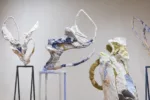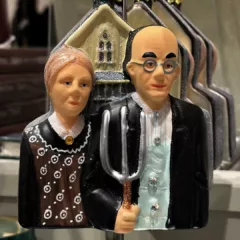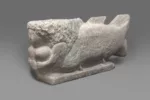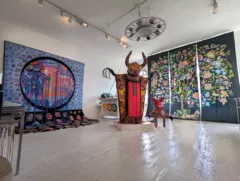Suzanne Glover Lindsay, Daphne S. Barbour and Shelley G. Sturman, et al Edgar Degas Sculpture (Collections of the National Gallery of Art Systematic Catalog) (Washington, D.C.: National Gallery of Art, 2010) ISBN 978-0691148977
This sumptuous and scholarly book will be welcomed by everyone interested in Degas’ work or in nineteenth-century sculpture, as well as by artists interested in bronze casting. It is highly unusual for collection catalogs to be of interest, other than to researchers; however, the National Gallery of Art owns 52 of the 69 original works in wax, clay and plaster that survived from Degas’ studio, as well as eleven bronze casts, making it the touchstone for understanding Degas’ sculpture.
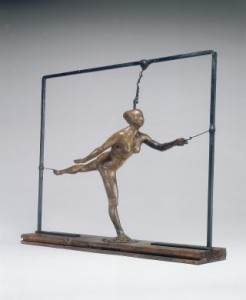
Research on the catalog was the result of a decade-long collaboration among an art historian, two conservators and three scientists. They have made a major contribution to understanding of Degas’ sculptural thinking and his technique in modeling wax and various clays over armatures which he made himself, and have precisely identified materials of each of the wax and clay originals as well as the alloys of a number of the bronzes. The computer models used to study the relationship between the original waxes, the bronze modèls and the ultimate bronze casts are illustrated, as are radiographs which reveal the armature for each work in the catalog. The process of bronze casting is illustrated with step-by-step diagrams, as is the process of casting one of the plasters.
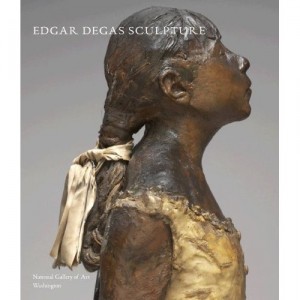
Suzanne Lindsay situates Degas’ sculpture within his career and its posthumous history. Each of the entries includes technical information and many have art historical discussions. Lindsay’s substantial entry on the wax original of The Little Fourteen-Year-Old Dancer could stand alone as an article, covering the figure’s pose, costume, iconography, formal context, history, and reception, as well as its original condition. The volume is beautifully illustrated, including many details and comparative works, and includes a glossary of technical terms and a bibliography.
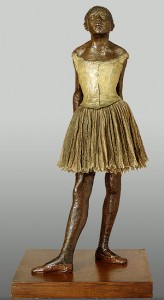
Degas exhibited only a single sculpture, the wax Little Dancer Aged Fourteen, and had none of them cast in bronze. Since he left no instructions, it has long been debated whether his heirs’ decision to authorize editions of posthumous casts was consistent with the artist’s intention. But the importance of the sculpture itself is unquestionable, and this is a fitting documentation of one of the great bodies of nineteenth-century art.
Two more modest books that might be of particular interest to artists:
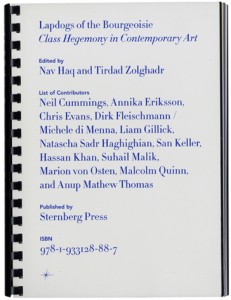 Lapdogs of the Bourgeoisie; Class Hegemony in Contemporary Art Nav Haq and Tirdad Zolghadr eds., contributions by Charlotte Bydler, Neil Cummings, Annika Eriksson, Chris Evans, Liam Gillick, Nav Haq, San Keller, Hassan Khan, Erden Kosova, Dr. Suhail Malik, Marion von Osten, Natascha Sadr Haghighian, Dr. Malcolm Quinn, Tirdad Zolghadr (Berlin: Sternberg Press, 2009) ISBN ISBN 978-1-933128-88-7
Lapdogs of the Bourgeoisie; Class Hegemony in Contemporary Art Nav Haq and Tirdad Zolghadr eds., contributions by Charlotte Bydler, Neil Cummings, Annika Eriksson, Chris Evans, Liam Gillick, Nav Haq, San Keller, Hassan Khan, Erden Kosova, Dr. Suhail Malik, Marion von Osten, Natascha Sadr Haghighian, Dr. Malcolm Quinn, Tirdad Zolghadr (Berlin: Sternberg Press, 2009) ISBN ISBN 978-1-933128-88-7
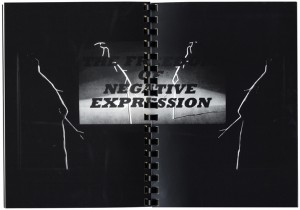
Lapdogs of the Bourgeoisie is a publication following, and partially documenting, a series of exhibitions and performances that began in an alternative space in London, Gasworks, and traveled to Istanbul, Stockholm, Cairo, and Bristol from 2006-09. According to the editors, The initial, overarching question was something along the lines of How exactly does “class” play a role in the production, direction, criticality, and dissemination of contemporary art? In fact, the questions about class they explored center predominantly on power, rather than equally class-bound questions of taste.
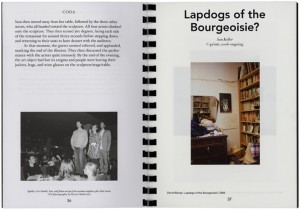
The book consists of essays, performance scripts, a self-evaluation, The Solo Show Test by Seda Naiumad; photo-essays, including San Keller’s photographic series showing artists’ works situated in their parents’ homes (above) — not quite Louise Lawler, despite the parallels; A [Hacked] Hacker Manifesto [version 5.1:transitional version] McKenzie Wark by Neil Cummings; and a conversation among participants. Some idea of the project’s tenor can be found in the glossary, which lists Art Habitus as A professional body that is created to recruit students for higher art education, usually made up of white, middle-class, local males (with the occasional German predominant). Fluent English is required, as well as much previous experience and entrepreneurship. There is, however, no required reading.
The writers and participants are well-read, critically up-to-date, and unusually willing to look in the mirror when asking questions about class. Most of them dish up their satire with clarity, and often humor. Here is Seda Naiumad from Sketch for the Essay “Certitudo Sui”:
Whether you’re a bourgeoise student, a same-sex family, or an overeducated housewife; when you peruse the nametags and the work descriptions; when you swish down the hermeneutic vortex of a Carsten Höller slide, squealing like a poked piglet; or when you appreciate the guest curator’s institutional critique with a complicit smile of mischief on your lips, discuss it over fair trade coffee in the museum café, and then purchase two catalogs on your way out– one as a Christmas gift, one for your bookshelf; this is when you become a beautifully proactive part of the scenario.
This is a welcome collection of work and writing which once again demonstrates that residents of art capitals have no monopoly on smarts.

Rob Hamelijnck, Front Desk/ Back Office; The secret world of galleries in 39 pictures and two texts (Rotterdam: Fucking Good Art and post editions, 2010) ISBN 978 94 6083 031 0
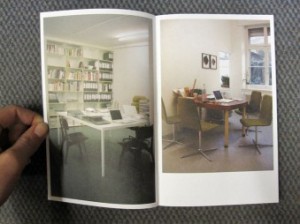
Front Desk/Back Office is an artist’s book of photos of just that: the reception areas and hidden sanctums of a group of galleries in Amsterdam, Berlin, Copenhagen, Hamburg, Sao Paolo and Zurich – taken mostly without the galleries’ permissions. It’s visual fodder for a sociology of the art trade, with the reader left to draw any conclusions. The book has two (different) front covers, printed upside down in relation to one another. One opens to the photographs, the other reveals a title page and two short essays by architect, Thibaut de Ruyter, and sociologist, Olav Velthuis. This small volume might fit as another chapter in Lapdogs, examining class as manifest in the interior decoration of commercial art spaces.
The Marvelous Museum: Orphans, Curiosities & Treasures: A Mark Dion Project (San Francisco: Chronicle Books, 2010) ISBN 978-0811874519
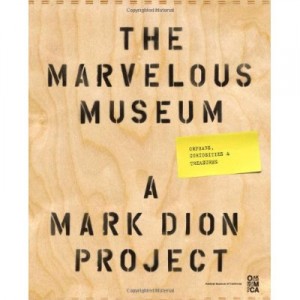
This tome is part of a project by Mark Dion at the Oakland Museum (Sept. 11, 2010 – March 6, 2011), which had just re-installed its gallery of California art and was undergoing institution-wide self-scrutiny. The Oakland Museum is the result of merging three civic museums, one devoted to art, another to natural history and the third to cultural history – all focusing on California. As all serious, collecting museums must, the Oakland Museum was questioning the objects in its collection that did not accord with the museum’s mission.
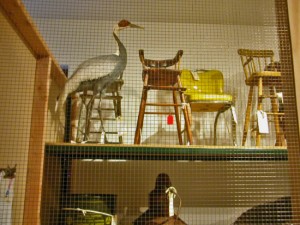
Mark Dion, one might say, is a museum’s artist. That is – he is much appreciated by museum professionals for the seriousness and sophistication he brings to questions of what museums collect, how they characterize, store and display their collections, and why. So rather than focus on the newly-installed works, he addressed the left-overs and rejects, those objects that remained, unseen, in the store rooms. The book is a wonderful object, contained in an over-sized box, with a tromp l’oeil cover that convincingly impersonates a wooden collection case. Opening the box recreates some of Dion’s exploration and discovery of the museum’s contents. An old-fashioned, museum collection label on the box states: The Marvelous Museum is comprised of one (1) clamshell box containing seven (7) object identification cards and one (1) hardcover book with jacket, vellum envelopes, and seven (7) additional cards inserted in said envelopes. Its description further states: Explores institutional collecting, sorting, categorization, and cultural analysis…Includes text and visual contributions by D. Graham Burnett, Rene de Guzman, Andrew Leland, David Maisel, Marina McDougall, Rebecca Solnit, and Lawrence Wechsler, among others.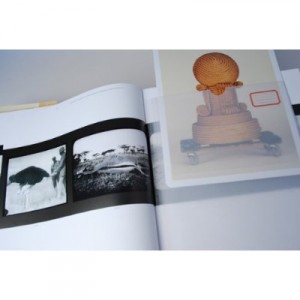
The most valuable characteristics Dion brings to his museum investigations are his endless curiosity and his sense of wonder – which he shares with the book’s readers: were the instruments, carefully fitted into a suitcase, acquired as curator’s tools or collection objects? why did someone save the keys, many, but not all, labeled, to doors and cabinets that no longer exist? where would a taxidermied elephant be moved that would require a packing crate? wouldn’t it be fun to see the two pair of deer antlers intwined in death struggle that the museum de-accessioned in 1969 for $12.50?
All of this makes one ponder the range of oddities that reside in other museum collections. The strangest one I can recall is the world’s largest hairball, preserved for eternity and on display, when I visited the Michigan State University Museum; it was presumably a relic of the university’s agriculture school. This book will surely delight anyone who spends lots of time in museum galleries or store-rooms and retains a curiosity about both the jewels and dross one finds there.



